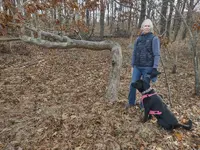Collection of more recent coins found at 2 different sites. One site was a home built in 1717. But just remains of a root cellar now. Other homesite is later 1770's early 1800's but also torn down long ago. Lost of iron signals but did not appear to have a root cellar.
A 1-2
1811-1813 VICTORIA NOBIS EST copper half penny. From Canada Provinces. Condition is pretty good. Never found one of these before.
B 1-2
1721 H French Colonies copper 9 Deniers. 1717 homesite. Condition just good. Wish it was better, another first for me.
C 1-2
1723 Hibernia half Penny. 1717 homesite. Condition very good. Copper
D 1-2
1787 Connecticut State Copper. Condition ok to good. Have found a number of these on the cape.
E 1-2
1746 King Geo II half Penny. 1717 homesite. Another coin is very nice condition.
F 1-2
1799 King Geo III half penny. Needs more cleaning but appears to be in very nice shape.
G 1-2
1 727-1760 King Geo II half penny quite worn. 1717 homesite.
H 1-2
1803 Draped Bust One Cent. Corrosion on the side that must have been facing up. I often wonder
about that. As reverse in in such better condition.
J 1-2
1806 Draped Bust Half Penny. First Draped Bust half penny for me.
K 1-2
1863? hard to read. Indian Head Penny. Common year.
L 1-2
Unknown Coin? If it even is a Coin. Measures 40mm Appears to be brass. I have found 5 counterfeit early coins in my town of Harwich to date. I thing this might have been another.
Late image is of two stamped Latten spoon bowls and Latten handle. The bowl with part of the handle intact is stamped by a Netherlands spoon maker. Many Latten spoons usually English. Latten spoon bowls found at Puritan homesites in Duxbury, MA were from the Netherlands. So they can go back to the early 1600's. Latten spoons were much stronger than pewter. They were often listed individually in colonial wills.
Thanks for looking!! Bill
A 1-2
1811-1813 VICTORIA NOBIS EST copper half penny. From Canada Provinces. Condition is pretty good. Never found one of these before.
B 1-2
1721 H French Colonies copper 9 Deniers. 1717 homesite. Condition just good. Wish it was better, another first for me.
C 1-2
1723 Hibernia half Penny. 1717 homesite. Condition very good. Copper
D 1-2
1787 Connecticut State Copper. Condition ok to good. Have found a number of these on the cape.
E 1-2
1746 King Geo II half Penny. 1717 homesite. Another coin is very nice condition.
F 1-2
1799 King Geo III half penny. Needs more cleaning but appears to be in very nice shape.
G 1-2
1 727-1760 King Geo II half penny quite worn. 1717 homesite.
H 1-2
1803 Draped Bust One Cent. Corrosion on the side that must have been facing up. I often wonder
about that. As reverse in in such better condition.
J 1-2
1806 Draped Bust Half Penny. First Draped Bust half penny for me.
K 1-2
1863? hard to read. Indian Head Penny. Common year.
L 1-2
Unknown Coin? If it even is a Coin. Measures 40mm Appears to be brass. I have found 5 counterfeit early coins in my town of Harwich to date. I thing this might have been another.
Late image is of two stamped Latten spoon bowls and Latten handle. The bowl with part of the handle intact is stamped by a Netherlands spoon maker. Many Latten spoons usually English. Latten spoon bowls found at Puritan homesites in Duxbury, MA were from the Netherlands. So they can go back to the early 1600's. Latten spoons were much stronger than pewter. They were often listed individually in colonial wills.
Thanks for looking!! Bill
Attachments
-
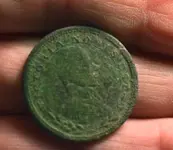 A1.webp19.8 KB · Views: 204
A1.webp19.8 KB · Views: 204 -
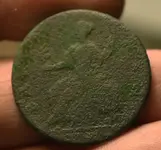 G2.webp26.2 KB · Views: 91
G2.webp26.2 KB · Views: 91 -
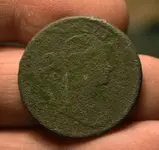 H1.webp29.8 KB · Views: 84
H1.webp29.8 KB · Views: 84 -
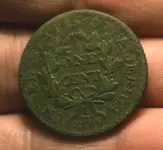 H2.webp22.8 KB · Views: 84
H2.webp22.8 KB · Views: 84 -
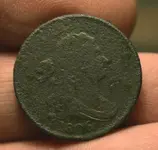 J1.webp26.6 KB · Views: 82
J1.webp26.6 KB · Views: 82 -
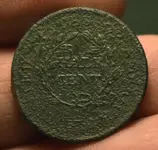 J2.webp31.7 KB · Views: 83
J2.webp31.7 KB · Views: 83 -
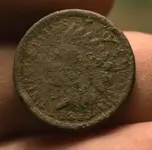 K1.webp25.3 KB · Views: 80
K1.webp25.3 KB · Views: 80 -
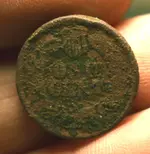 K2.webp267.5 KB · Views: 85
K2.webp267.5 KB · Views: 85 -
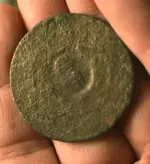 L1.webp24.6 KB · Views: 90
L1.webp24.6 KB · Views: 90 -
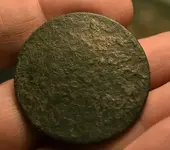 L2.webp28.9 KB · Views: 98
L2.webp28.9 KB · Views: 98 -
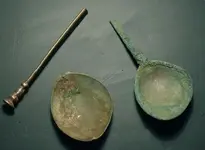 latten bowls and handle.webp37.5 KB · Views: 98
latten bowls and handle.webp37.5 KB · Views: 98 -
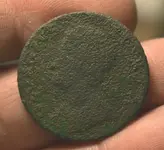 G1.webp30.1 KB · Views: 91
G1.webp30.1 KB · Views: 91 -
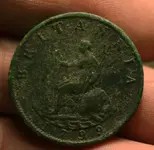 F2.webp29.1 KB · Views: 85
F2.webp29.1 KB · Views: 85 -
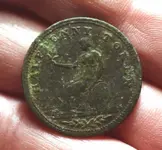 A2.webp31.5 KB · Views: 80
A2.webp31.5 KB · Views: 80 -
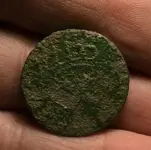 B1.webp32.3 KB · Views: 80
B1.webp32.3 KB · Views: 80 -
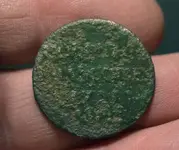 B2.webp26.5 KB · Views: 85
B2.webp26.5 KB · Views: 85 -
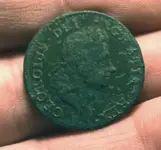 C1.webp18.3 KB · Views: 81
C1.webp18.3 KB · Views: 81 -
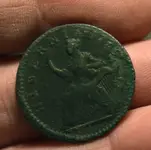 C2.webp22.8 KB · Views: 79
C2.webp22.8 KB · Views: 79 -
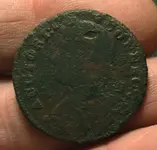 D1.webp25.8 KB · Views: 78
D1.webp25.8 KB · Views: 78 -
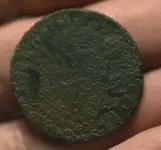 D2.webp18.5 KB · Views: 78
D2.webp18.5 KB · Views: 78 -
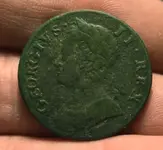 E1.webp24 KB · Views: 74
E1.webp24 KB · Views: 74 -
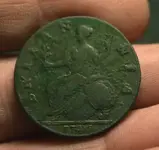 E2.webp21.2 KB · Views: 75
E2.webp21.2 KB · Views: 75 -
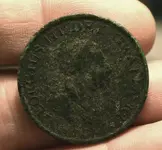 F1.webp31.5 KB · Views: 92
F1.webp31.5 KB · Views: 92
Last edited:
Upvote
49



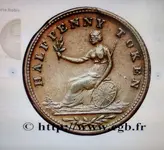
 THANKS for SHARING WITH US ALL !!
THANKS for SHARING WITH US ALL !!